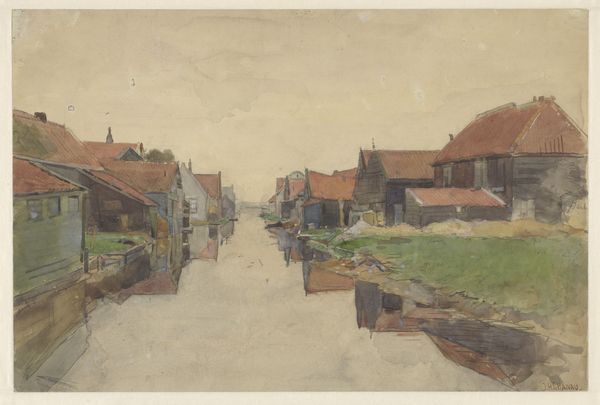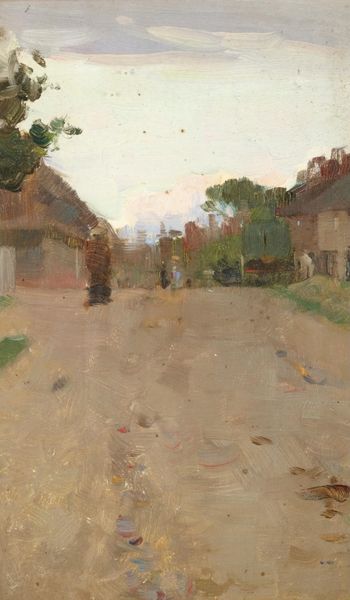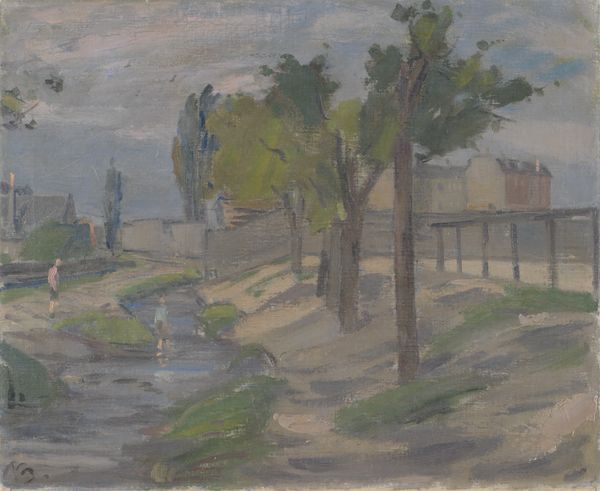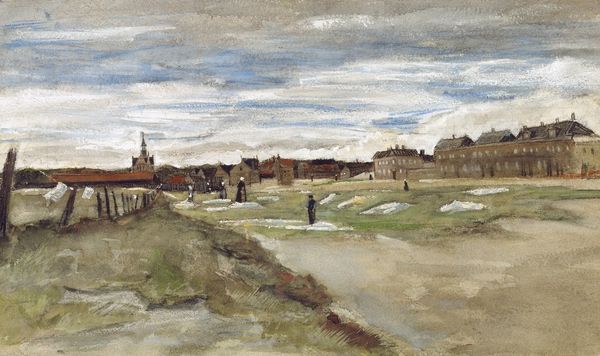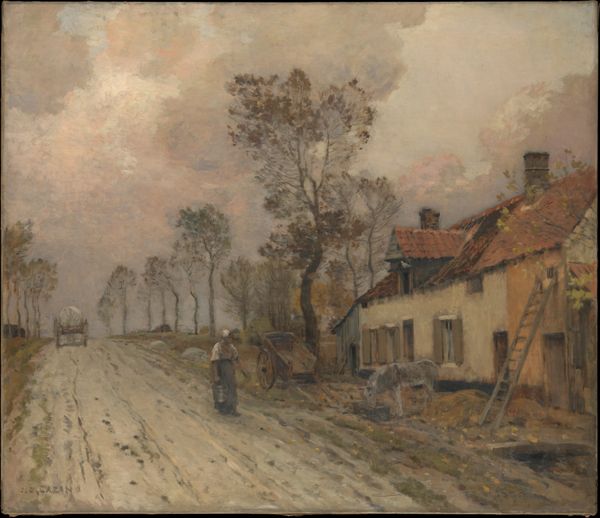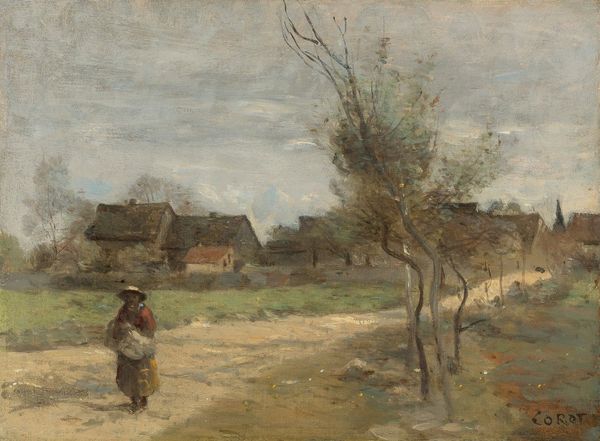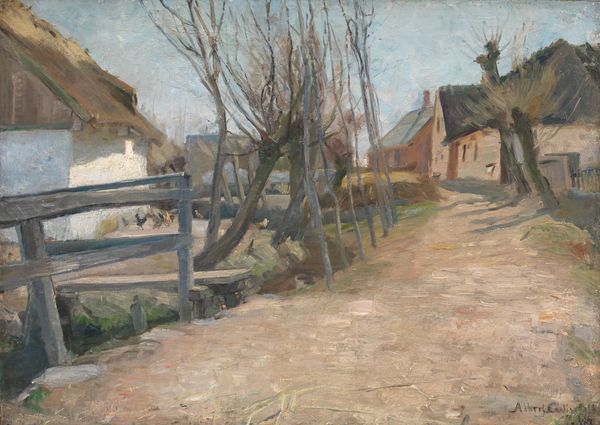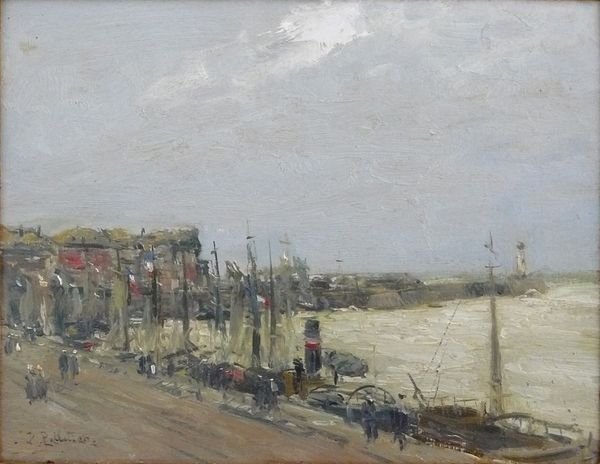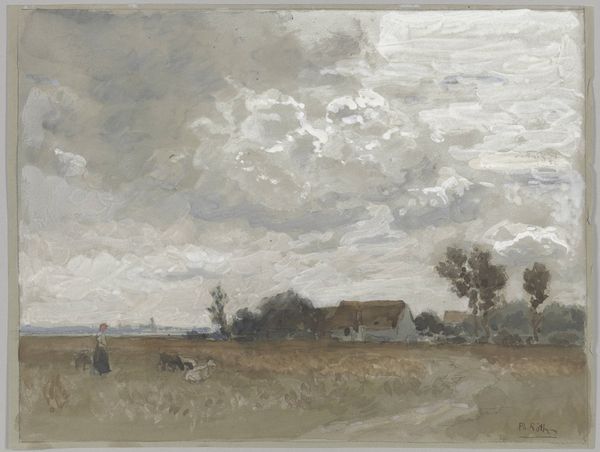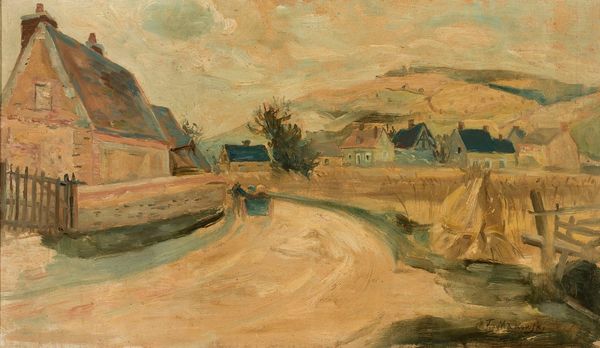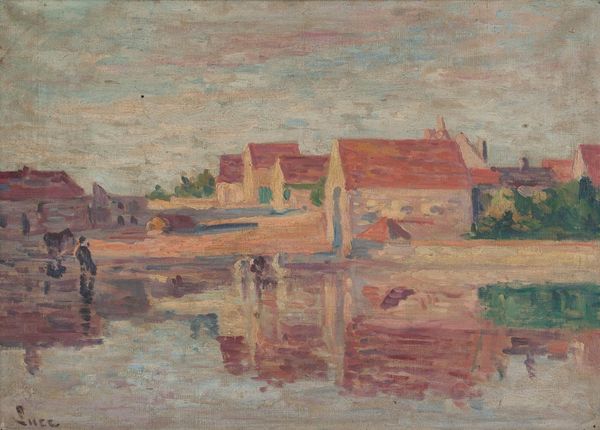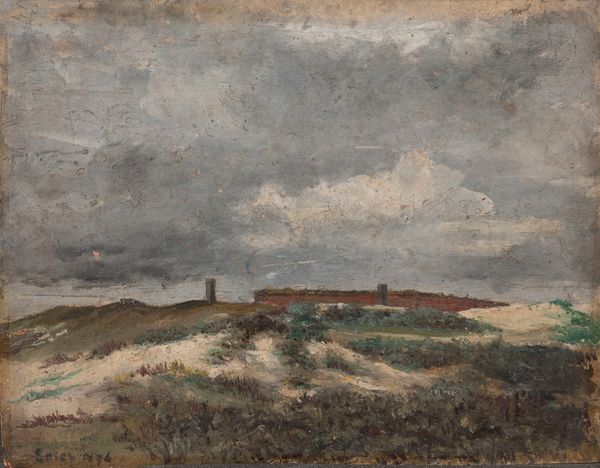
plein-air, oil-paint, canvas
#
water colours
#
impressionism
#
plein-air
#
oil-paint
#
landscape
#
oil painting
#
canvas
#
cityscape
#
watercolor
Dimensions: 29 cm (height) x 59 cm (width) (Netto)
Curator: Here we have Albert Gottschalk's 1884 oil on canvas, "Bakkegade i Hillerød," currently held at the SMK. It’s a Danish cityscape rendered with remarkable atmospheric sensitivity. What’s your initial impression? Editor: Bleak. Positively bleak. It's dominated by these oppressive grey skies and seems to capture the dreary banality of everyday life. The road appears wet, slick… it's all quite somber. Curator: Precisely! Note the masterful use of light and shadow to create depth. Gottschalk employs a muted palette, focusing on subtle gradations of grey, brown, and pink, which reinforces that sense of subdued realism and evokes a melancholy atmosphere. Editor: It makes me think about the labor involved in constructing these homes. Look at the uniformity, the plainness of the materials…the unseen workers shaping and laying each brick, probably under similar skies. It's not celebrating grandeur; it’s documenting the everyday and its attendant toils. Curator: The formal arrangement draws the eye directly up the receding plane of the street. Observe how the lines of the buildings converge towards a vanishing point in the distance, subtly emphasizing the loneliness of that figure walking away from us, under the lantern light. Editor: Loneliness, or just one of the locals, going to buy ingredients. These colours—earth tones of ochre and clay—feel tied to the physical act of construction, of working the land to create shelter. It contrasts starkly with the fine brushwork in the clouds that are almost ethereal, a clash of harsh work conditions with dreamy skies. Curator: Yes, I agree that tension exists. And while seemingly mundane, it possesses a quiet, enduring quality, doesn't it? The brushwork appears so spontaneous. Editor: It speaks volumes, particularly about the value and process attached to simple buildings when viewed within the canon of fine art. That intersection of lived reality and artistic representation intrigues me, particularly when framed by these clouds of labor, visible and invisible, captured so realistically. Curator: Well, it certainly provides a new angle when we think of visual language and how it translates cultural and human experiences, and its context, too. Editor: Absolutely. It highlights that art is always linked to materials and the circumstances behind their use, whether obvious or less so, which ultimately shapes its meaning.
Comments
No comments
Be the first to comment and join the conversation on the ultimate creative platform.
